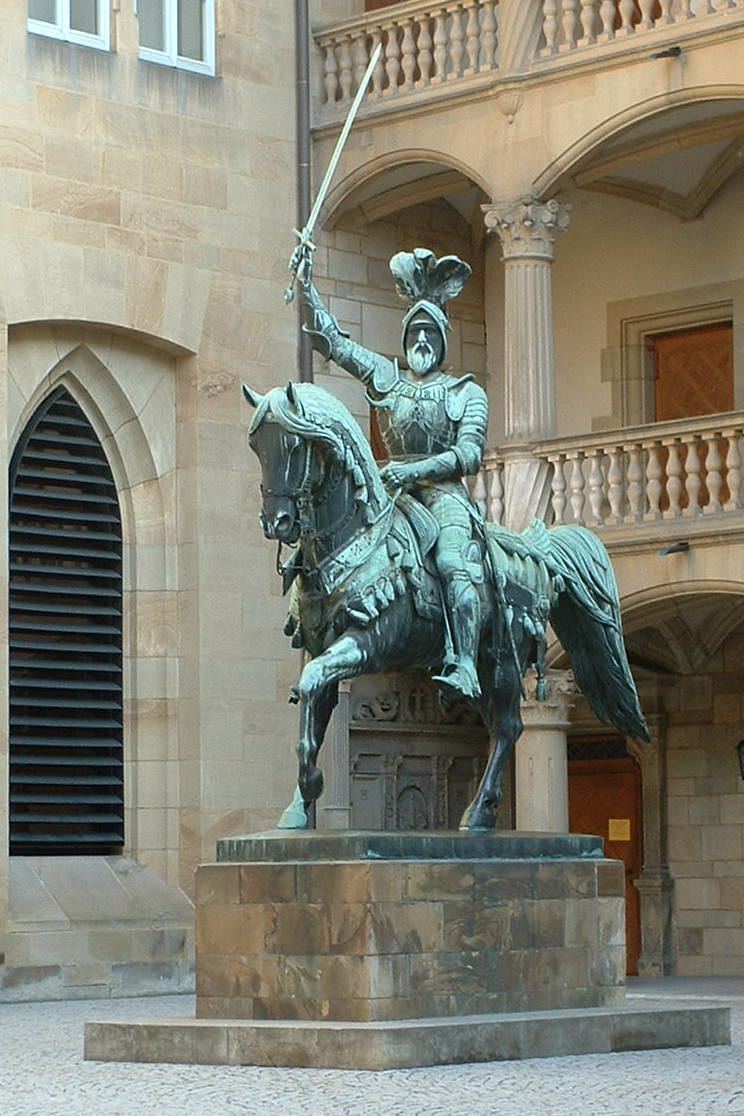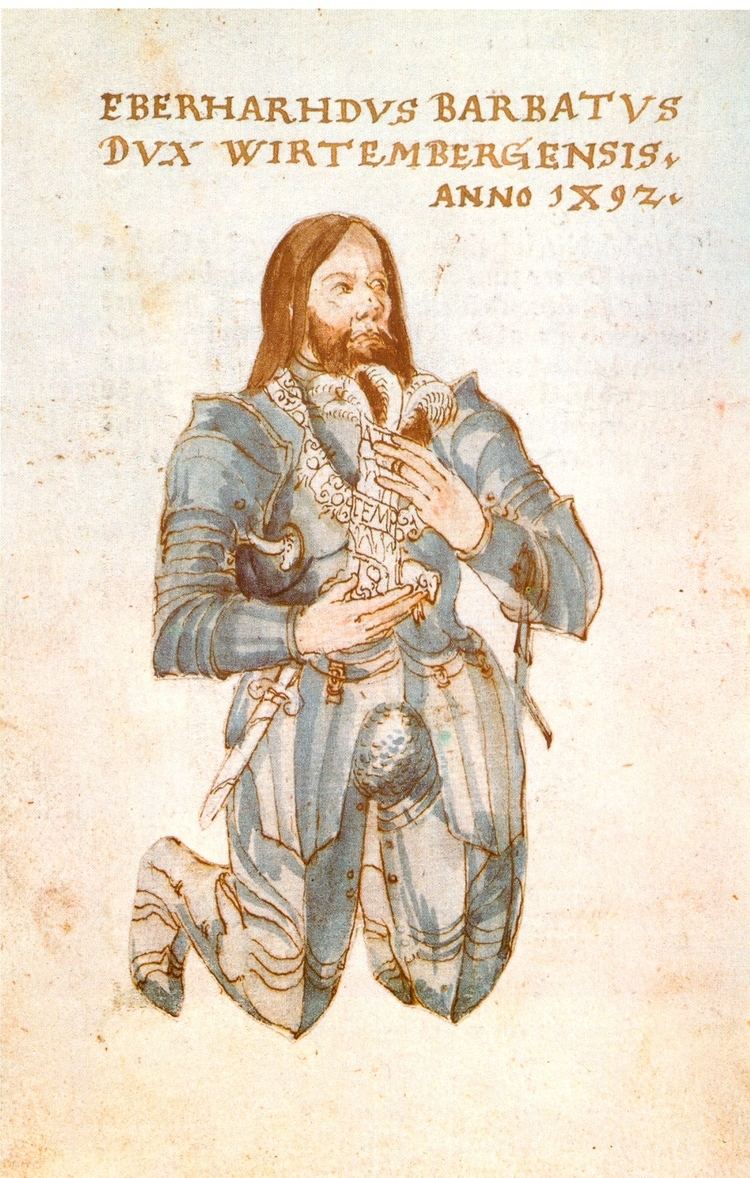Name Eberhard Duke | ||
 | ||
Eberhard I of Württemberg (11 December 1445 – 24 February 1496). From 1459 until 1495 he was Count Eberhard V. From July 1495 he was the first Duke of Württemberg. He is also known as Eberhard im Bart (Eberhard the Bearded).
Contents
Life
Born at Urach, he was the son of count Ludwig I and his wife Mechthild of the Palatinate, born as countess palatine by the Rhine. He was first buried in the collegiate church Saint Peter auf dem Einsiedel, later in the collegiate church of Tübingen.

Count Eberhard V officially took charge of government of Württemberg-Urach when he was still underage. Württemberg was divided since 1442. At first he had a legal guardian, a respected nobleman who had mentored his father as a youth, Rudolph von Ehingen of Kilchberg.
A fencing manual was created for Eberhard in 1467 by Hans Talhoffer. The manuscript, Cod.icon. 394 a, is currently held by the Bavarian State Library.
The following year, in 1468, he travelled to Jerusalem and became a knight of the Order of the Holy Sepulchre. To commemorate this he chose the palm as his symbol.
In Urach on 12 April (or 4 July) 1474 he married a prestigious bride, Barbara, daughter of Ludovico III Gonzaga, Marquis of Mantua. The only daughter out of this marriage, Barbara, was born in Urach on 2 August 1475 and died on 15 October of that year.
In 1477 Eberhard, whose motto was attempto ("I dare"), founded the University of Tübingen. He ordered the expulsion of all Jews living in Württemberg. He invited the Brethren of the Common Life and the community of devotio moderna to his country and founded collegiate churches in Urach, Dettingen an der Erms, Herrenberg, Einsiedel near Tübingen and Tachenhausen. He took interest in reforms of the church and monasteries. Despite not being able to speak Latin he held education in high esteem and had a great number of Latin texts translated into German. Parts of his large library have been preserved. Finally on December 14, 1482, he achieved the re-unification of the two parts of Württemberg, Württemberg-Urach and Württemberg-Stuttgart, with the Treaty of Münsingen. He moved the capital to Stuttgart and ruled the re-united country. In the same year Pope Sixtus IV awarded him the Golden Rose. In 1492 he was awarded the Order of the Golden Fleece, by Maximilian I, then King of Germany.
On July 21, 1495 count Eberhard V was declared Duke of Württemberg on the Reichstag in Worms by Maximilian I. At that time his new title (in German, "Herzog") denoted a large measure of sovereignty within the Holy Roman Empire, just below that of "Elector".
Johannes Nauclerus, a humanist and historian, served at his court. Eberhard died at Tübingen in 1496.
Reception
Already his contemporaries admired his intellectual strength. In the 19th and 20th century the patriotic historiography transfigured him. A bust of him was erected in Walhalla. In the Swabian anthem "Preisend mit viel schönen Reden" by Justinus Kerner, he is praised as: "Eberhard the one with the beard, Württemberg's beloved ruler." In this so-called song of the Württembergians, he is praised as the richest prince amongst the German princes, as he is able to rest his head on the lap of every one of his subjects without having fear for his life or property.
